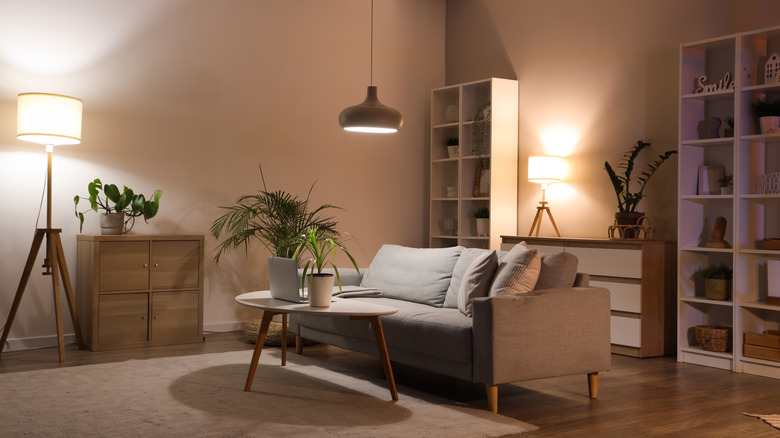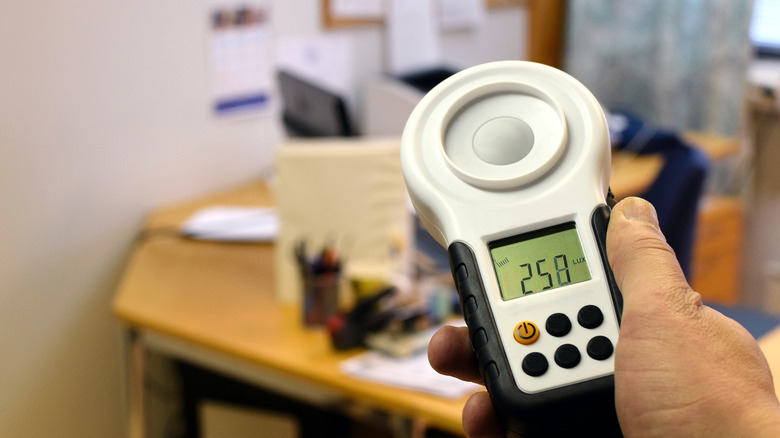What Is Lumens In Lighting (And How Can It Affect Your Home Design)
We may receive a commission on purchases made from links.
Have you ever found an interior design inspiration picture and wondered why your room looks so different, even when you have carefully selected all of your furniture and decor? There is a secret element that you may be missing from your home design: lighting. Whether you are attempting to figure out the best type of lighting to use in your kitchen, make your office a more productive space, or turn your bedroom into the perfect sleeping space, you will want to know about lumens, the secret behind the perfect ambiance in your home.
When you think about measuring lighting in your home, you probably first think of a watt, which is a unit that measures light in terms of electrical power. However, if you are looking for a perfect lighting situation, then you should also consider lumens. Lumens are a measurement of the total visible light output of a complete lighting unit. They are typically used to figure out the lighting in a space by determining lumens per square foot. So, considering lumens gives you a better understanding of how bright your lighting fixtures, such as lamps, chandeliers, and more, should be, and how the brightness affects the room. With this knowledge, you can more effectively place lighting fixtures, know which bulbs to use, and perfectly cultivate your home from the bright, clean rooms to the dim, cozy ones. Now that you know what lumens are, you can explore what lumen levels are best for each room in your home.
How to choose a lumen level for your space
There are a few general guidelines to follow when trying to perfectly light your home, but once you know how lighting affects a space, you can get creative and personalize your lighting to boost your home's ambience. In the kitchen, you probably want a well-lit room, about 30 to 40 lumens per square foot, but countertops should have more lumens, about 70 to 80 per square foot, as task lighting in work areas can promote focus and reduce eye strain. This also applies in any room that requires a lot of reading or other close work, such as the laundry room, home office, or even bathroom, where you spend time looking at small details. The dining room can be a bit dimmer, around 30 or 40 lumens per square foot, with more light concentrated on the table so you can see your food.
The bedroom and living room should have lower lumen levels of around 10 to 20 lumens per square foot to create the cozy, warm atmosphere you want from a comfortable space. For entryways, foyers, and hallways, you can also opt for lower brightness levels of around 5 to 10 lumens per square foot. Of course, all of these levels should be adjusted to your needs. For example, if you spend a lot of time in a specific room, you might want to brighten it up. You can also emphasize special artwork or photos in your home by lowering lumen levels in the room as a whole and focusing a brighter light on whatever feature you want to elevate.
How do you measure lumens?
Now that you know what lumens are, you will want to know more about how to measure lumens so you can apply your newfound knowledge. Lumens can be measured most accurately by professionals, but you can purchase and use a special device called a light meter or lux meter. To use a light meter, calibrate the device by measuring the ambient light level brightness in the room when all lights are turned off. After that, turn on all or some of the lights, and measure the light level when your lights of choice are on. Indirect lighting and shadows from furniture can impact lighting, so take a variety of measurements throughout the space to get a better understanding of how the lighting fluctuates around the room. Once you have your readings, subtract your brightness level measurements with the lights on from the original measurement taken when all of the lights were turned off. Use these lumen levels to determine which spaces need more or less light.
If you have not yet considered how lighting affects your space, it is definitely time to start. It makes a major difference in how you style a space and the feeling that space evokes. Playing with the light level is an underrated way to change up your home's look and vibe. Next time you want a change in your space, find yourself a light meter like this Digital Light Meter LUX Meter for $50 on Amazon and find out just how much you can change your interior design by simply adjusting the lighting.


